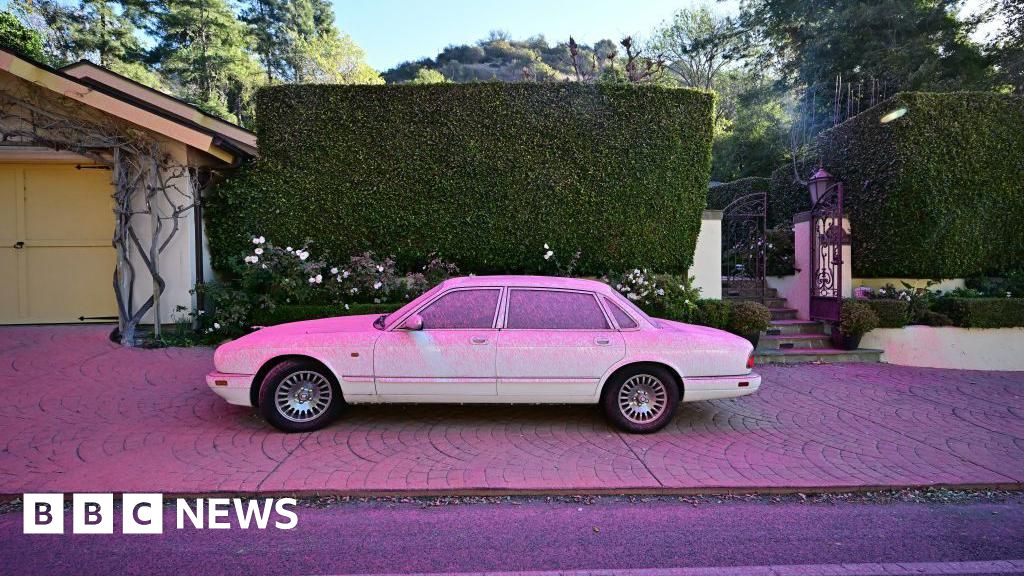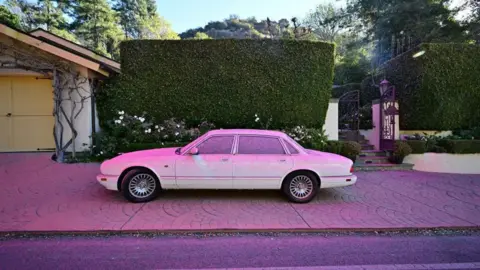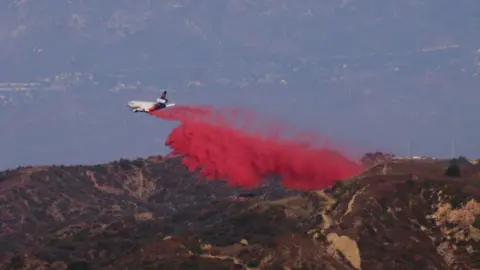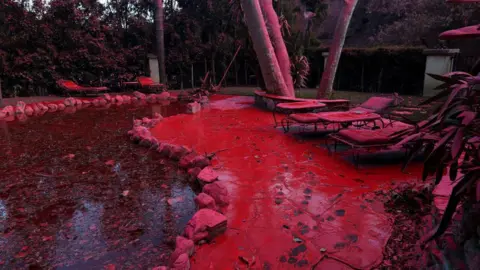
 Getty Images
Getty ImagesAs crews battle devastating wildfires in southern California, vivid images have emerged of air tankers dropping bright red and pink powder on Los Angeles suburbs.
The eye-catching substance – fire retardant – is now a common sight in the area, blanketing driveways, rooftops and cars.
Officials said thousands of gallons of the substance were dropped in the last week to stop the flames from spreading.
But what exactly is in it, and how does it help fight the wildfires?
The flame retardant is a product called Phos-Chek, which is sold by a company called Perimeter.
It has been used to fight blazes in the US since 1963, and is the main long-term fire retardant used by the California Department of Forestry and Fire Protection. It is also the most-used fire retardant in the world, according to a 2022 report in the Associated Press.
 Getty Images
Getty ImagesThe exact formula of Phos-Chek is not public knowledge but the company has said in previous filings that the product is 80% water, 14% fertilizer-type salts, 6% colouring agents and corrosion inhibitors.
As for its color, the company said it is “a visual aid for pilots and firefighters alike.” After a few days of exposure to sunlight, the colour fades to earth tones, it said.
The retardant is typically sprayed around a wildfire on vegetation and land that is fire-prone to stop the flames from spreading to that area.
According to the US Forest Service, retardants “slow the rate of spread by cooling and coating fuels, depleting the fire of oxygen, and slowing the rate of fuel combustion as the retardant’s inorganic salts change how fuels burn.”
 Getty Images
Getty ImagesIts use has been controversial in the past over its potential effects on the environment.
A lawsuit filed in 2022 by the Forest Service Employees for Environmental Ethics, an organisation made up of current and former employees of the US Forest Service, accused the federal agency of violating the country’s clean water laws by dumping chemical fire retardant from planes onto forests.
It argued that the chemical kills fish and is not effective.
The following year, a US District judge agreed with the employees, but in her ruling allowed the Forest Service to continue using the retardant as it seeks a permit to do so from the US Environmental Protection Agency (EPA).
The case drew the attention of communities devastated by wildfires in the past, including the town of Paradise, California, which was destroyed by fire in 2018.
Its then-mayor, Greg Bolin, hailed the judge’s ruling, saying it ensures communities “have a fighting chance” in the face of fires.
The Forest Service told NPR that this year, it phased out the use of one type of Phos-Chek formula – Phos-Chek LC95 – in favour of another – MVP-Fx – saying that the latter is less toxic to wildlife.
The Forest Service also has a mandatory ban in place on dropping fire retardant in sensitive environmental areas, like waterways and habitats of endangered species. There are exceptions to the ban, however, in cases “when human life or public safety are threatened.”




